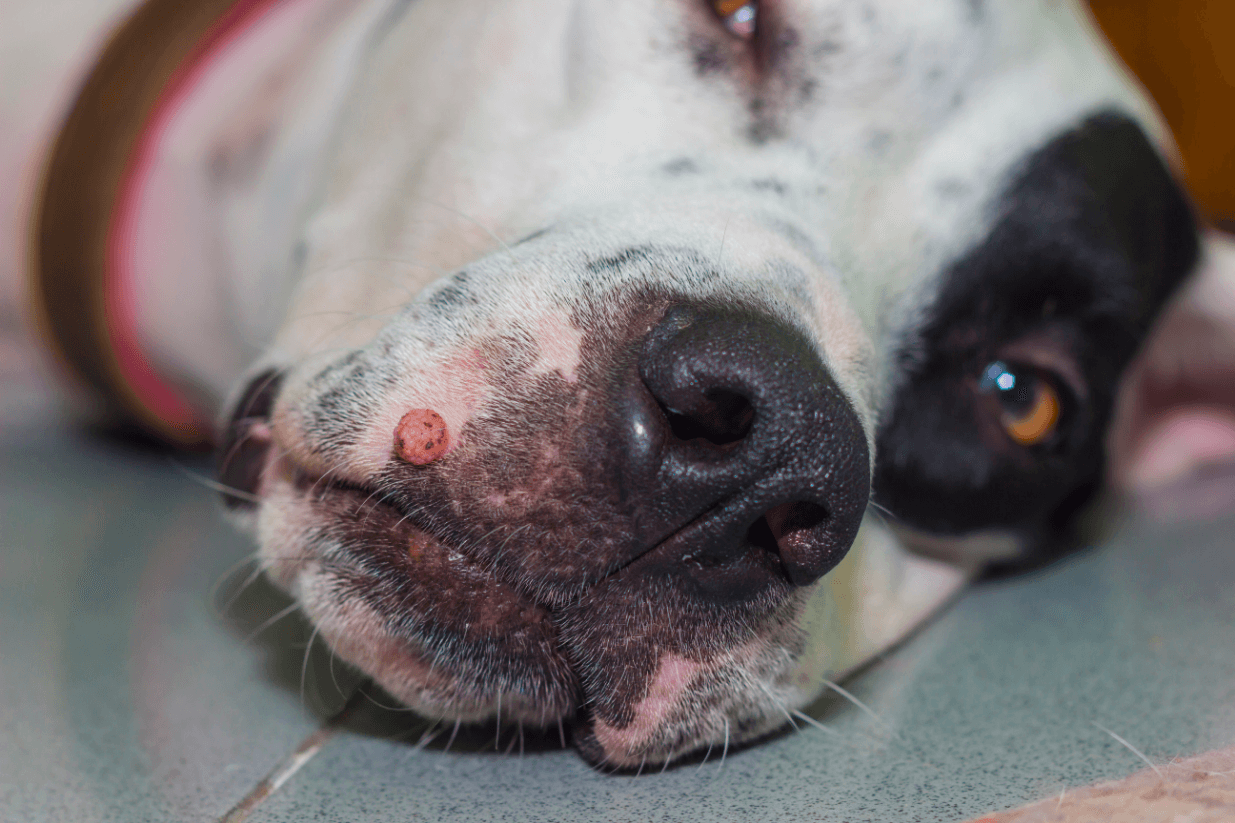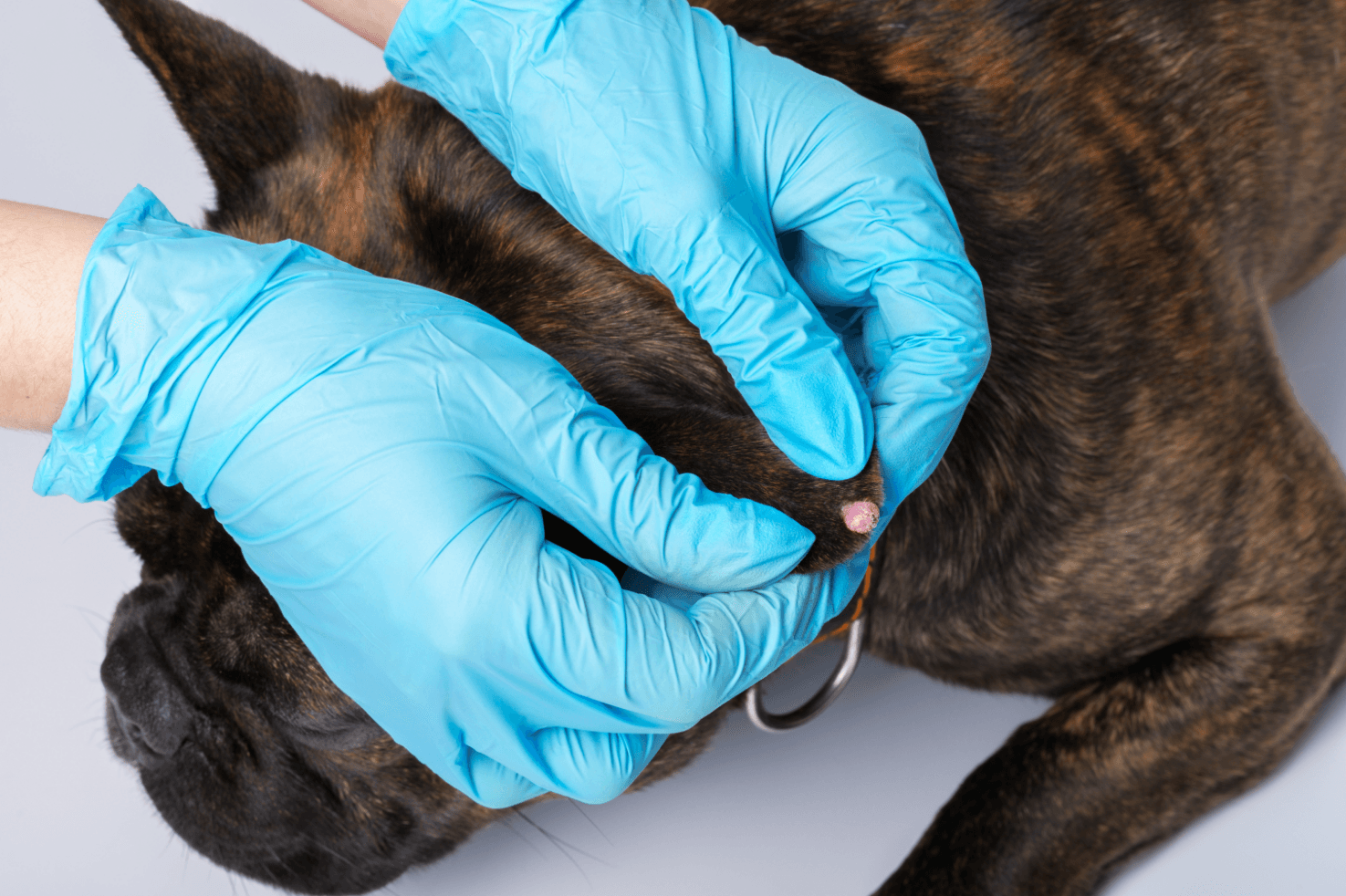

Canine Papilloma Virus
Canine Papilloma Virus (CPV) causes small, generally harmless growths or warts called papillomas in dogs. These growths are specific to dogs and can be spread through direct contact, contaminated objects, and possibly by insects.

Types of Papillomas
CPV presents in three ways: Oral Papilloma Virus (CPV-1): Common in young dogs, affecting the mouth area. Canine Mucous Membrane Papillomatosis: Rapidly growing growths in the lips, mouth, and eyes of young dogs. Cutaneous Papillomas and Cutaneous Inverted Papillomas: Single growths in older dogs or young adults, respectively.
Identification of Papillomas
Papillomas, also known as dog warts, appear as lumpy growths, often in clusters resembling cauliflowers. They can be mucous membrane, cutaneous, or inverted.
Diagnosis of Canine Papilloma Virus
Diagnosis may involve observing the appearance and age of the dog. Biopsy and laboratory examination are conducted if needed for a definitive diagnosis.
Symptoms and Complications
Most papillomas resolve on their own as the dog’s immune system matures. Severe cases can occur in immunocompromised dogs. Growth interference with eating or walking may cause pain, bleeding, or infection.
Treatment Options
Most cases are self-limiting, requiring no removal. Surgical removal, electro or cryosurgery may be considered for necessary cases. Wart vaccinations can be an option in severe cases affecting swallowing or breathing.
Prevention of Canine Papillomas
Clean the environment and items in contact with affected dogs. Keep young and immunocompromised dogs away from those showing signs of papillomas. Dogs are not contagious once the growths start to shrink. Recovered dogs cannot be re-infected with the same strain but may be susceptible to other strains. Understanding CPV helps in early detection and appropriate care for your dog. Consult your vet if you notice any suspicious growths or symptoms.
Concerned About Your Dog? Act now!

Animal Trust is a trading name of Animal Trust Vets CIC, a community interest company registered in England and Wales. Company Registration No: 07938025
Registered Office: Animal Trust Administration Centre, Cedab Road, Ellesmere Port, CH65 4FE
